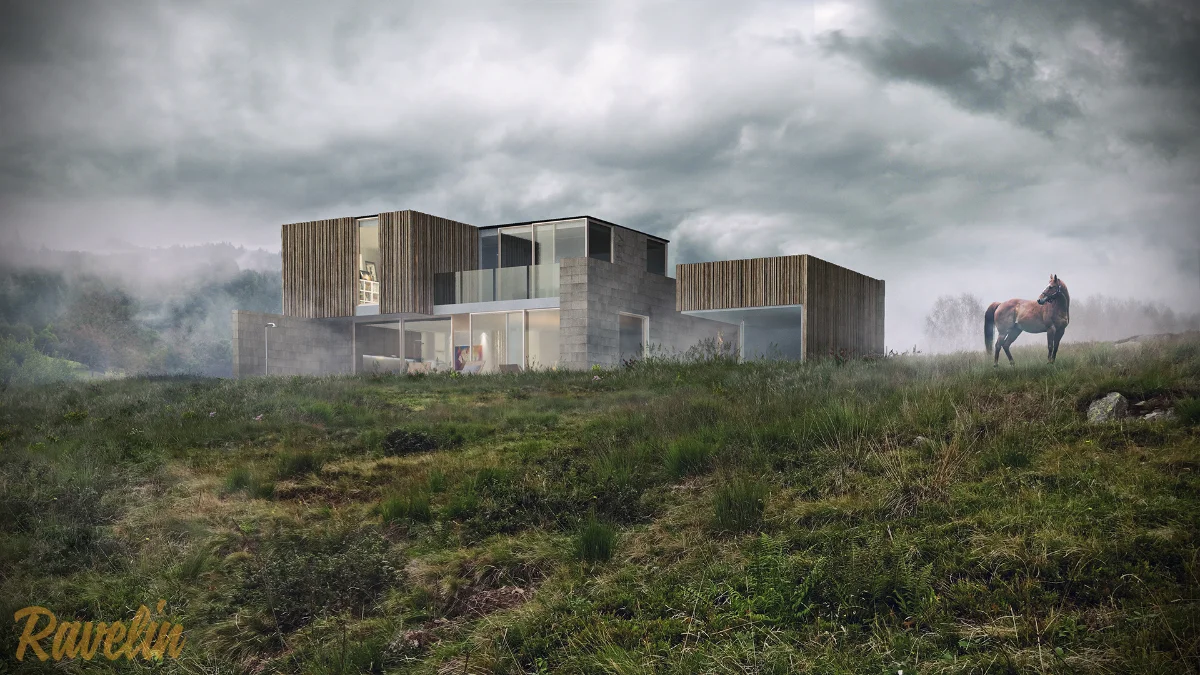The Future of 3D Visualization in Architecture and Construction
Imagine walking through a building that hasn’t even been constructed yet—feeling the smoothness of polished floors, experiencing the grandeur of an open atrium, and touching the intricate textures of the walls. This isn’t a scene from a sci-fi movie; it’s the reality made possible by 3D visualization, a groundbreaking technology reshaping the construction industry.
Stepping into the Future of Construction
Gone are the days of relying solely on static blueprints and hard-to-decipher 2D sketches. Today, architects, developers, and clients can immerse themselves in detailed, lifelike representations of projects long before the first brick is laid. This innovation isn’t just streamlining construction processes—it’s revolutionizing how we design, plan, and communicate.
What is 3D Architectural Visualization?
At its heart, 3D architectural visualization is the creation of realistic digital models of buildings, interiors, and landscapes. Unlike traditional drawings, these models incorporate accurate lighting, materials, and textures, offering stakeholders a near-real experience of the design. Whether through high-quality renderings or immersive virtual walkthroughs, 3D visualization bridges the gap between abstract ideas and tangible reality.
How 3D Visualization Evolved
In the past, architects relied on hand-drawn sketches and physical scale models—both labor-intensive and costly. The advent of digital drafting marked a significant leap forward, followed by the rise of 3D rendering software. Today, we’ve reached a point where real-time visualization, AI-driven design tools, and VR experiences allow users to “walk” through a building that exists only in the digital realm.

Why 3D Visualization is a Game-Changer for Construction
Better Design, Fewer Mistakes
Construction errors are expensive. A minor oversight in a blueprint can lead to significant financial losses once materials are ordered and work begins. With 3D visualization, architects and developers can identify and address issues early in the design phase, preventing costly mistakes.
For instance, a high-rise project in New York initially featured inefficient window placement, which would have led to higher heating costs. Thanks to real-time 3D visualization, the developers spotted the issue early, adjusted the layout, and saved millions over the building’s lifespan.
Clearer Communication Between Teams
Explaining a complex design using only a 2D floor plan can be like describing a movie scene without showing the actual footage.
3D visualization eliminates this challenge by offering photorealistic images, immersive virtual walkthroughs, and even augmented reality (AR) experiences. This clarity helps clients understand and approve designs quickly, reducing the back-and-forth confusion often associated with traditional blueprints.
Faster, More Efficient Construction
In construction, time is money. Delays can derail projects, but 3D visualization accelerates decision-making, minimizes miscommunication, and ensures smoother workflows. Contractors, suppliers, and investors all benefit from a clear visual roadmap, reducing wasted time and unnecessary changes.
Key Benefits of 3D Visualization
- Fewer Design Errors: Catch and fix problems before construction begins. Adjusting a digital model takes minutes, while correcting real-world mistakes can cost millions.
- Cost & Time Savings: Projects move faster as stakeholders can make confident, informed decisions.
- More Effective Marketing: Selling a property before it’s built? High-quality 3D renderings can turn hesitant buyers into committed ones. Studies show that compelling 3D visuals can boost sales by up to 40%.

The Cutting-Edge Tools Behind 3D Visualization
Real-Time Rendering for Instant Feedback
Gone are the days of waiting weeks for a single render. Modern tools like Unreal Engine and Enscape allow architects and clients to see design changes in real time, enabling instant feedback and adjustments.
Virtual & Augmented Reality (VR & AR)
Imagine putting on a VR headset and stepping into a future skyscraper before it’s built. VR and AR technologies make decision-making more intuitive and allow clients to feel truly immersed in the design.
AI & Machine Learning in Visualization
AI-powered tools analyze design patterns, suggest material optimizations, and even predict potential construction challenges before they arise. This leads to smarter, more efficient designs and fewer surprises during construction.

How 3D Visualization is Reshaping Different Sectors
- Residential Construction: Buyers can take virtual tours of homes before they’re built, eliminating the need to rely solely on imagination.
- Commercial & Industrial Projects: Large-scale developments like shopping malls, office buildings, and factories can be visualized in detail, making investor approvals and zoning discussions much smoother.
- Urban Planning & Infrastructure: City planners use 3D models to simulate traffic flow, analyze environmental impact, and optimize public spaces for better livability.

The Future of 3D Visualization in Construction
- AI-Driven Automation: Rendering will become faster, more affordable, and more precise.
- Cloud-Based Collaboration: Teams worldwide will be able to work on the same 3D model in real time, fostering seamless collaboration.
- Digital Twins & Smart Cities: Entire cities will have real-time digital replicas, optimizing energy use, traffic, and sustainability.

Challenges & Limitations to Consider
- High Costs of Advanced Software: Top-tier visualization tools can be expensive, though costs are expected to decrease as technology evolves.
- Technical Skill Barriers: Not all firms have trained specialists in 3D rendering. Investing in education and training will be essential.
- Hardware Requirements: High-quality 3D visualization demands powerful computing resources, which smaller firms may struggle to afford.

Final Thoughts: A New Era for Architecture & Construction
The construction industry is undergoing a major transformation, and 3D visualization is at the forefront of this change. From reducing costly mistakes to speeding up approvals and marketing properties with stunning visuals, this technology is revolutionizing how buildings are designed and constructed.
The future belongs to those who can envision it before it exists. Are you ready to step into the next generation of architecture and construction?




